- News
- Reviews
- Bikes
- Components
- Bar tape & grips
- Bottom brackets
- Brake & gear cables
- Brake & STI levers
- Brake pads & spares
- Brakes
- Cassettes & freewheels
- Chains
- Chainsets & chainrings
- Derailleurs - front
- Derailleurs - rear
- Forks
- Gear levers & shifters
- Groupsets
- Handlebars & extensions
- Headsets
- Hubs
- Inner tubes
- Pedals
- Quick releases & skewers
- Saddles
- Seatposts
- Stems
- Wheels
- Tyres
- Tubeless valves
- Accessories
- Accessories - misc
- Computer mounts
- Bags
- Bar ends
- Bike bags & cases
- Bottle cages
- Bottles
- Cameras
- Car racks
- Child seats
- Computers
- Glasses
- GPS units
- Helmets
- Lights - front
- Lights - rear
- Lights - sets
- Locks
- Mirrors
- Mudguards
- Racks
- Pumps & CO2 inflators
- Puncture kits
- Reflectives
- Smart watches
- Stands and racks
- Trailers
- Clothing
- Health, fitness and nutrition
- Tools and workshop
- Miscellaneous
- Buyers Guides
- Features
- Forum
- Recommends
- Podcast
feature
Know your group riding signals and calls
When you're cycling in a group you can't always see the road ahead as clearly as you would when riding alone so clear communication is essential for keeping everyone safe and moving efficiently, and that means learning a few simple hand signals and calls.
Signals and calls might be confusing at first but they become second nature in no time. When it's you who's passing on the information, just make sure that you're as clear as possible.
Bear in mind that many signals are not universal – they vary regionally and between individual groups – so make sure you pay particular attention on the first couple of rides with a new bunch of people.
If you're ever in any doubt about whether to call back as well as making a hand signal, do it anyway; you're better off giving riders behind an unnecessary shout than running the risk of an accident.
Stopping
When the group needs to stop at a traffic light or when someone has a puncture, for example, raise your hand straight up.
Some people use a closed fist behind the back to indicate stopping, but that's appropriate only for smaller groups because its visible just to riders immediately behind you.
Other people use an arm out to the side with a flat palm facing backwards.
Calling out "Stopping" is usually a good idea, especially if it's unexpected, because you might need both hands on the brakes.
[And yes, Liam in our pictures does need to stop quickly before he hits that wall].
Slowing
You might need to slow when approaching a tight bend, for instance, or if someone in the group is struggling with the pace. Put your arm out to the side and move it slowly up and down.
Calling out "Slowing" is often appropriate.
Obstruction in the road
If there's an obstruction that requires riders to alter their road position, such as a pedestrian or a parked car, point behind your back in the direction you need to move using the arm that's on the side of the hazard. In countries like the UK where we drive/ride on the left, you'll usually need to move out to the right, but you'll occasionally need to tell riders in a group to move further left.
Road surface hazard
Point out potential hazards on the road surface such as potholes and drain covers that need to be avoided. Your hand must be visible to riders behind, of course, so make sure you position your arm out to the side rather than in front of you.
Shout out "Hole" – or whatever other type of hazard is coming up.
Gravel
If there's a patch of gravel (or something similar) that could be loose and treacherous, put your arm out and wave your palm towards the road surface.
Give a "Gravel" shout to avoid any doubt.
Speed bumps, railway tracks and cattle grids
Warn riders behind of features that run across the road ahead by pointing down at the surface and waving your hand laterally. Some people do this with their arm out to the side, others with their arm behind their back.
Shout out the type of hazard you're about to encounter; riders behind definitely need to know there's a cattle grid coming up, for instance, especially in wet conditions.
Turning
When you're approaching a turn, stick your arm out at shoulder height to indicate the change in direction.
A "Turning" shout is often useful, particularly in a large group.
Come through
When you've finished your time at the front of the group and want to drift off towards the back, let riders behind you know by flicking your elbow forwards before moving. Flick your left elbow if you want people to come through on the left, flick your right elbow if you want people to come through on the right (that said, we know that some people flick the elbow on the side they intend to drift towards – which is the exact opposite – so make sure you know the etiquette of your particular group).
Thumbs up
A quick thumbs up says "thanks" when a rider moves over to give you a bit more space, for example, or if another road user waits patiently for the group to pass where the road narrows.
And yes, there are plenty of less friendly hand gestures for other road users too. We don't need to go into those here!
Calls
Always consider calling back to other riders in the group to reinforce your hand signals. Sometimes it's not necessary, particularly in smaller groups, so use your judgement here.
There are a few other common calls that don't have accompanying hand movements:
Car up A car is approaching from behind.
Car down A car is approaching from ahead.
Car back Another way of saying that a car is approaching from behind.
Single out or single file Arrange yourselves one behind another.
On the left/right I'm going to pass you on the left/right.
Clear left/right At a junction, the road to the left/right is free of traffic.
If you use any other hand signals (not that type!) or calls, let us know about them in the comments.
Mat has been in cycling media since 1996, on titles including BikeRadar, Total Bike, Total Mountain Bike, What Mountain Bike and Mountain Biking UK, and he has been editor of 220 Triathlon and Cycling Plus. Mat has been road.cc technical editor for over a decade, testing bikes, fettling the latest kit, and trying out the most up-to-the-minute clothing. He has won his category in Ironman UK 70.3 and finished on the podium in both marathons he has run. Mat is a Cambridge graduate who did a post-grad in magazine journalism, and he is a winner of the Cycling Media Award for Specialist Online Writer. Now over 50, he's riding road and gravel bikes most days for fun and fitness rather than training for competitions.
Latest Comments
- chrisonabike 11 min 56 sec ago
Agree, but again it's how to start to break the vicious circle?...
- chrisonabike 23 min 32 sec ago
I'm either amazed that they can get through with (presumably) a full sized waste truck, or amazed that she could not. Although as you say the bin...
- C3a 35 min 45 sec ago
Absolutely. Even with everyone behaving as they should there isn't enough room for everyone to be able to keep moving....
- belugabob 36 min 50 sec ago
They can't spell "stupider"
- Mr Blackbird 1 hour 20 min ago
How about this for negative stereotyping :...
- David9694 1 hour 24 min ago
£1500? I almost feel the layer of grime lifting off this one with my Muc-off cleaner, a shine returning to the alu with Autosol and an old t-shirt:...
- Basemetal 4 hours 44 min ago
Watch out for toe overlap (front wheel clearance) with midfoot cleats,
- Safety 5 hours 57 min ago
"So now you're saying that being in that family - even by marriage - makes you more likely to commit a traffic offence?"...
- neilwheel 6 hours 53 min ago
Will those wide rim brake models fit inside a shimano 40-49mm brake caliper with 28mm max clearance??? Gonna be a squeeze...
- Simon E 7 hours 2 min ago
I'd be even more concerned about the effect it may have on whether the helmet can still do its job in the event of an impact....











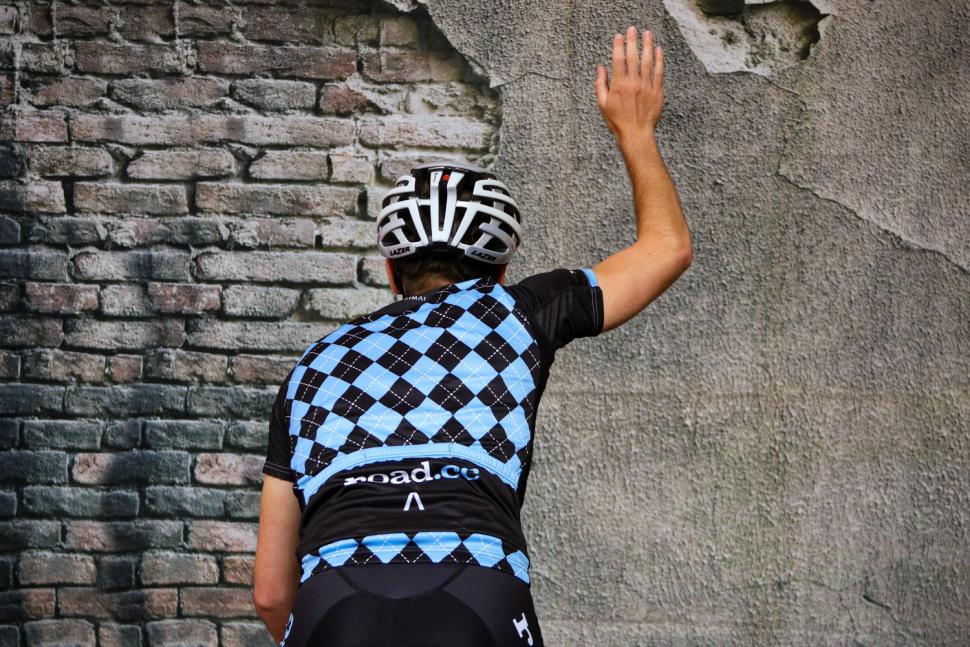
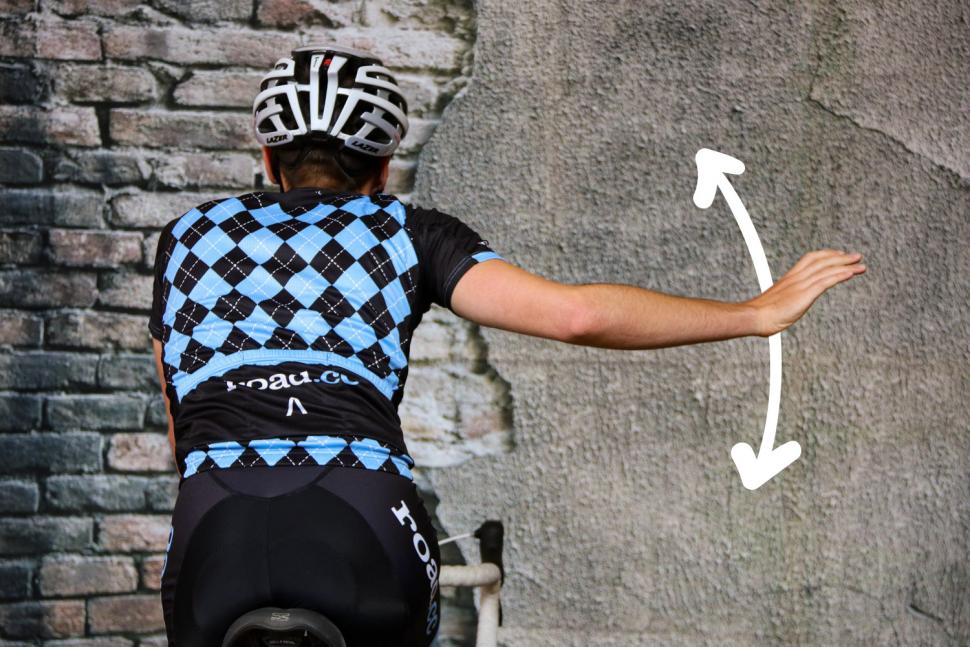
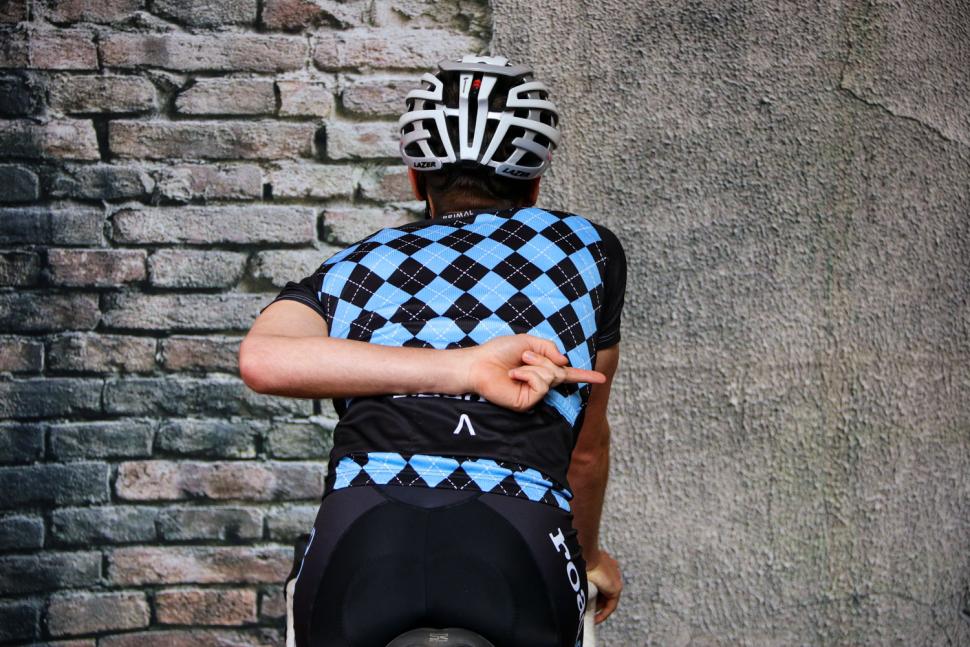
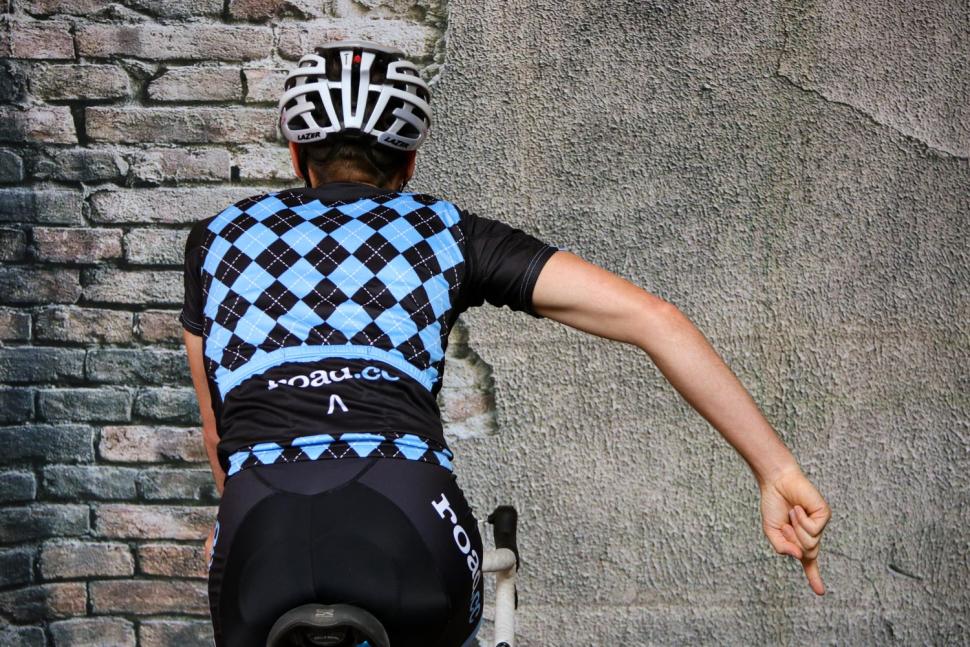
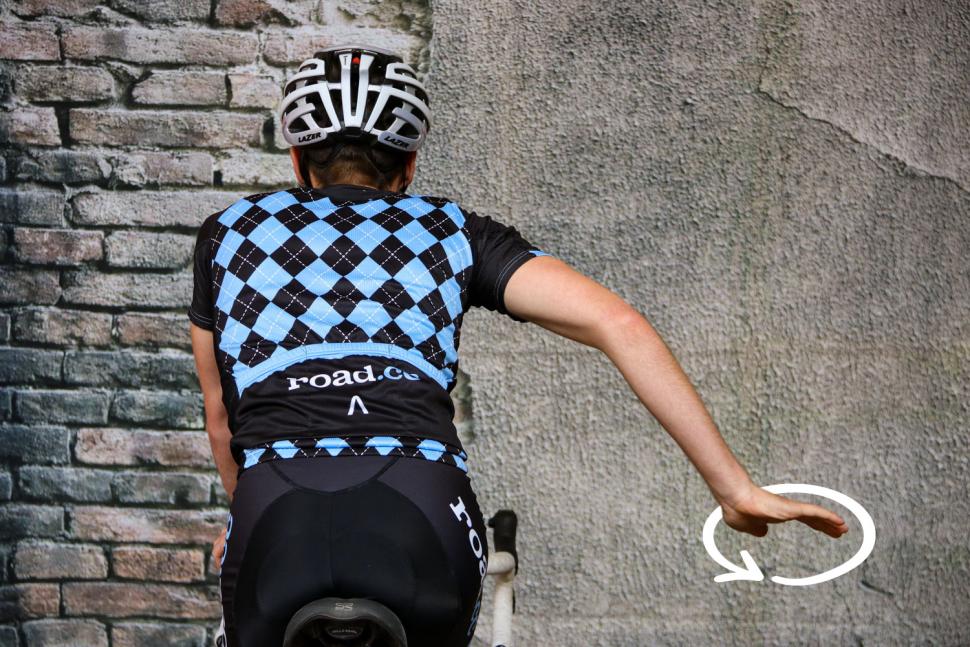
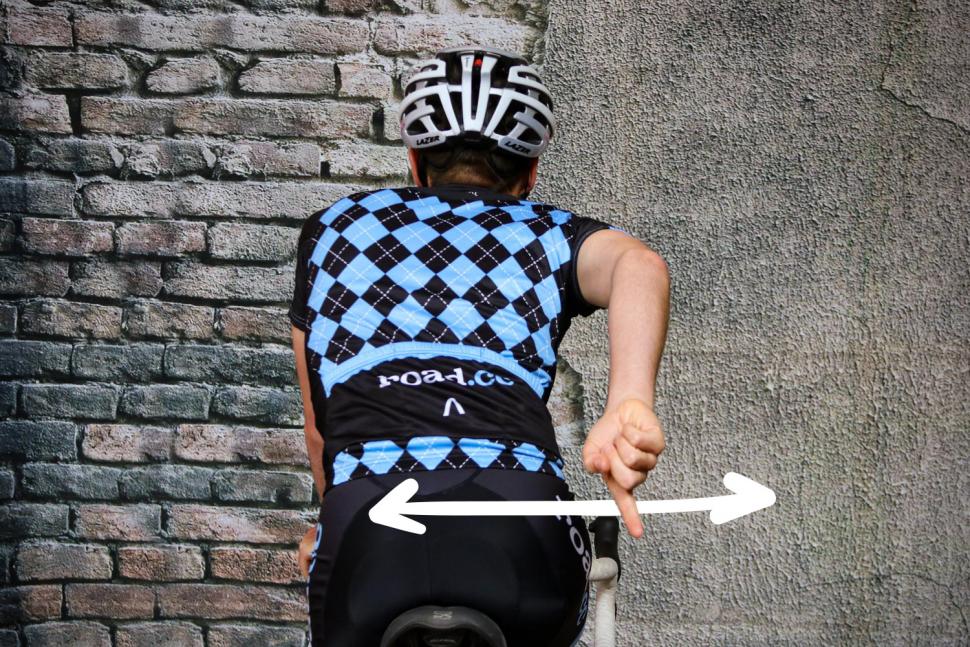



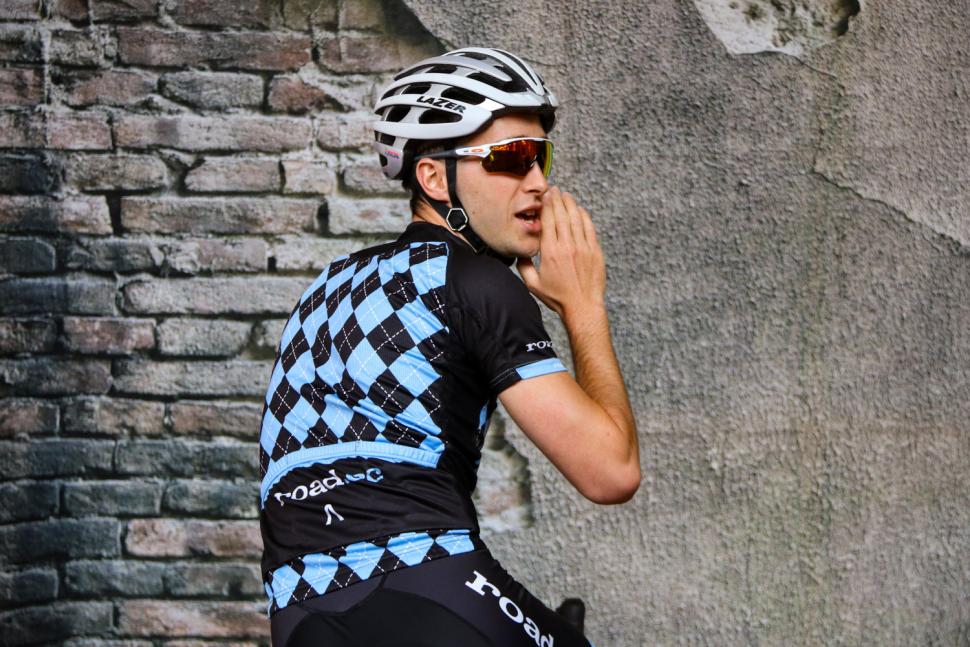
Add new comment
50 comments
In our club, at the start of every ride, each rider is given a 10 by 10 matrix on paper, a bit like a BS bingo card that some of you may have played. Along the side are letters and up top are numbers. If a hazard is encountered, the ride leader simply shouts "A 7", the riders only need to pull their matrix card from their back poket to look up the inference and act accordingly. Easy.
We've always done it this way, why change?
So far only 3 major incidents in 3 years of riding. Not bad!
Thia has to be a joke. 7 likes so far though.
It's 'car up', 'car down' as in up your arse and down your throat. Its not confusing and has nothing to do with the terrain.
Only one member in our club doesn't get it. But she's northern and cant grasp that you go up north and down south either.
It's quite a good joke, and would have 8 likes if the site let me like it twice.
We decode it to car front or car back.
In my area, Fife and Kinross, "nose", car from the front and "tail", car from behind are used. They are easy and clear to hear.
I think that is pretty common across Scotland. Certainly is in my Club too.
Just to add to the confusion, I’ve found that Southern/London clubs shout “Oil” instead of “Car”. So it would be “Oil Up/Down”. Not something ever heard up here in the Midlands.
I've never heard this, if someone shouted oil, I would expect to worry about surface traction from a spillage. Continue straight, don't brake.
I’ve always used Car UP and Car BACK. However this weekend I was at an event with a wide range of experience and found myself going with the majority which was a simple HEAD or TAIL and it worked well for everyone.
Stopping!
Hole!
"Car front" and "car back" are so obvious and clear, compared to the very ambiguous "car up" and "car down".
I always use the former and try to encourage that. Newcomers often get confused with the latter, and even experienced riders from other clubs have differing views on the "up" and "down" thing, as evidenced from the discussion here (and what happens on a hill when the "up" is down the hill etc?).
I don't understand why anyone would use such easily misunderstood terms when there are much clearer ones available.
Oh yes, sorry it was directly beneath an advert that I also ignored
Mat, what is the shout or signal for "shit we are riding directly into a brick wall"?
No mention of it in the article, even though the photographic evidence appears to show that is exactly what is about to happen.
Apart from at the end of the 'Stopping' section.
Always been "(On the) Nose" and "(On the) Tail" with little ambiguity. Obstacles are "(On the) Left/Right" or occasionally "Middle" - (though I have heard "Underneath" with a resigned sigh) And (unless you are on the track saying you are swinging up) the flicky elbow thing just gets you laughed at...
The simplest way to avoid up/down/back confusion is to ask at the start of the ride, rather than waiting until it becomes a problem
a couple more i’ve Heard which haven’t been mentioned so far:
- half off: reduce the speed a notch so someone at the back can hold the wheel more easily
- all on: everyone is in the wheels after a junction, and whoever is on the front can resume their effort
You need to be giving as much information as possible, with as few words and syllables as possible. “Car up” says, there’s a car, it’s behind us, and moving towards us, in 2 words, and 2 syllables. It’s quicker ( which is key ) than “car behind” ( 2 words, 3 syllables) and that’s what you need, when you’re dealing with 2 tonnes of metal, approaching at speed. Same deal with “car down” rather than “car in front”. The original convention of “car up / Car down” was developed with hills at the forefront of the idea. As that’s when relative speed differentials ( bikes relative to motorists) is at its greatest. “Car up” = car coming up the hill from behind, “car down” car coming down the hill from in front. There’s an argument about relative positioning ( if you’re heading down hill, and the car is coming up from in front of you, should that not be “car up”?) but you have to choose a convention and stick to it, and the accepted convention is to ignore relative positioning, and that “car up” is approaching from behind, “car down” is car approaching from in front. It’s now found it’s way into the flatter bits of a ride, where the speed differentials shouldn’t be as great, therefore not so much of a problem, but ( I certainly find) that when leading a large group ( 10 or more riders ) the variance in ability and fitness, now makes these calls necessary.
But that seems to presume that 'up' is universally and instantly understandable as a synonym for 'behind'. It clearly isn't. Nobody, in the real world, uses 'up' to mean 'behind' and 'down' to mean 'ahead'. That's a very specialised non-standard meaning.
Therefore any saving in time in saying the word is likely to be counterbalanced by an increase in the mental-processing time required to remember what the word is supposed to mean (especially for anyone new to the terminology).
Edit - if one extra syllable is such an issue, what's wrong with 'car front' and 'car back' or 'car rear', eh? Loses a syllable but still a lot closer to normal language than 'up' and 'down'.
(I really am arguing for the sake of it, I realise)
You may be, but you make exactly the point I would make. Merely by this conversation taking place is evidence that ‘car up’ and ‘car down’, whilst clear to some is completely confusing to others and therefore a crap way of conveying information clearly.
Up and down in this context make little sense to most and if they have to think through the ridiculous explanation about when a car is going up or down a hill (and even that could be interpreted the opposite way round) then this method is clearly seriously flawed in what it is attempting to convey. If even one rider in the group interprets it incorrectly then the call has failed.
My club used it for a long time and many people who joined started getting it wrong. I then just changed and started calling the obvious ‘car front’ and ‘car back’ which work as designed for EVERYONE without exception. Why anyone would try to claim that up and down are better (just because they have used them for ever and understand them) is beyond me.
Another that irked me was calling ‘clear left/ right’ at a junction. The reason it irked me? Because if it wasn’t clear the same individuals would shout ‘car left/ right’. How easily could those be misheard for each other?!
I once again decided I was not going to use those calls and simply call ‘clear’ if it is and ‘NO!’ If it’s not and I am stopping, especially at short notice (you know when you think it is clear then at the last minute a car comes into sight, usually around a blind bend or going pretty quick?) The ‘NO!’ call is also really good if you have to change an already shouted ‘clear’. When shouted with a bit more volume and urgency it is obvious and reaction inducing for those behind to stop. They don’t need to do any thinking.
Another variation that I’ve heard locally is ‘below’ for surface defects, especially when you can’t take a hand off the bars to point it out, often with ‘left/ middle/ right’ appended, especially if travelling in a double line. Again I like it as it is very clear and unambiguous.
PP
"Car down" might make some sense to those in the know but it is an example of elitism and daft in common parlance. It cannot safely be used for anything else. Call out "cycle down" or "pedestrian down" meaning to warn of those specific hazards ahead and most normal people are going to think that someone has crashed or that someone is lying in the road.
Yeah, what's wrong with 'car ahead' and 'car behind'?
I have wondered whether somewhere in the US there's a cop with the surname 'Down'. Officer Down must cause a major alert every time he identifies himself on the radio.
Yep, another very good reason for avoiding use of the word "down". Unless you are actually shouting "Rider down!" ie there's been a crash.
Up is universally accepted as being up ahead, upfront, up above, up north.
You get similar issues with calls when you're derny racing on the track and trying to communicate with the pacer on the derny above the engine roar, the noise of the crowd, the windrush and so on. You need clear unambiguous calls so you can't use Go and Slow because they sound too similar. Hup and Woah are usually used instead.
Behind the big motors we used to shout “Allez” to go faster and “Ho” to go slower - no other words would be used as they’d not be understood over all the noise - and the pacer would decide whether to do as asked anyway ....
One thing that really winds me up when I’m leading a group ride, is the fact so few people understand “car up, and car down” calls. I try to make it simple, car up ( as in up yer bum ) car down ( as in down your throat). I hate it when they get mixed up especially if they’re behind me and shout “car up” when they’re talking about a car that’s approaching from in front of me. Firstly, I know, I can see it, secondly, it’s “car down”. If I’m having to glance round, for no good reason, it’s not helping. Most of the other stuff is good to have, but not so critical, other than calling “clear” approaching a junction, when it isn’t, that’s a nightmare too. I tend to call “watch your gaps” when approaching junctions, to try and dissuade pile ups due to people getting too close to each other, and then an unexpected incursion by a motorist at the junction ( no indicators / wrong indicators / sudden change of mind ) for example, leading to a smashed up rear mech, because someone was wheel sucking, when they should have backed off ( for example ).
Did you consider that's because the majority of riders use 'Car Up' for a car up ahead and 'Car Back' for a Car behind. For the life of me I cannot see why you would use 'Down' for a car ahead and 'Up' for a car behind. It's counter intuitive and likely to cause confusion.
A good ride leader needs to appreciate when they need to adapt what they are doing to make it as udnerstood as possible, not get cross with people because they use a different and more simplistic system, that's just egotistical.
Not to mention that "up" is towards my head, which is at the front, and "back" is towards my bum, which is behind. Why on earth would you swap these round?
either because some people have an obsession with sticking things in their orifices, or because it's about keeping outsiders out.
Next time you see someone about to walk into something, shout "look down!", that way if they are one of the cycling brethan you will have saved them, and if they are infidels it's their own fault.
like this guy, who moved to a new club and spent several weeks "trying to educate them"
https://forum.cyclinguk.org/viewtopic.php?t=111731
Way to endear yourself to your new clubmates ...
The fact you need an aide memoire based on spit roasting proves these calls as not as intuitive as you would like to believe. In fact it seems you are the odd one out, because the majority (by your description) interpret them the other way. Almost as if the calls were made deliberately obscure to differentiate between real cyclists and noobs.
If also heard people argue to use car up because it is going up the road, thats nonsense, might as well call car right at a t junction for a car that is travelling to the right. (from the left)
In any other context than group rides If someone told you to look up, would you look behind you or look where you were going?
Anyway the only important really is behind, because the car in front 1) is on the other side and not a problem, 2) can be seen quite easily.
And of course bike down, sounds like a crash, not an oncoming (or overtaking) cyclist.
Pages